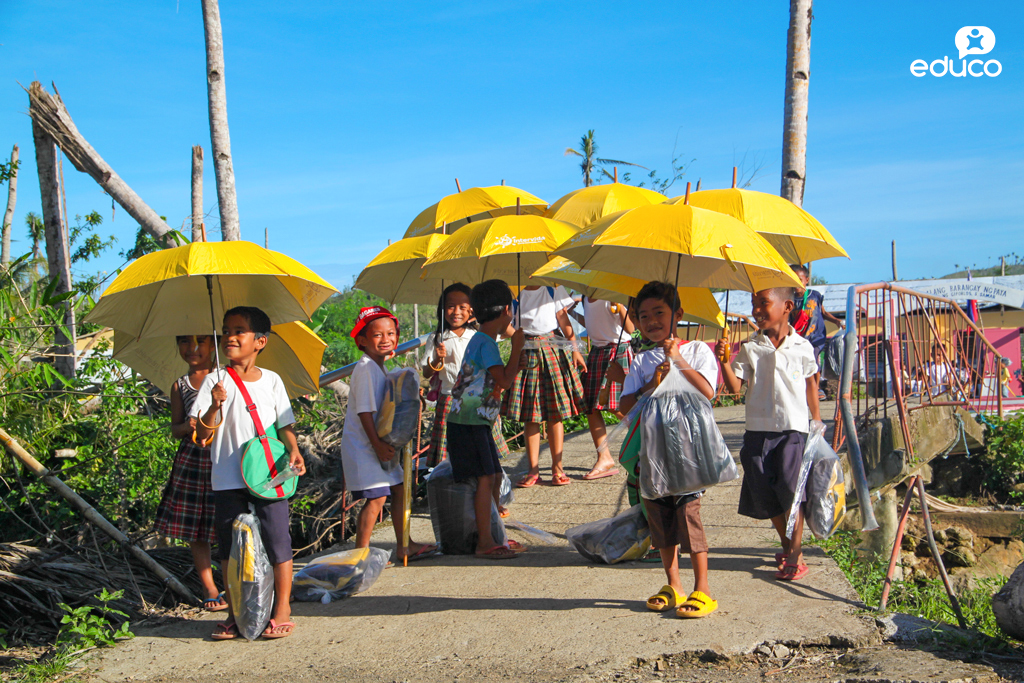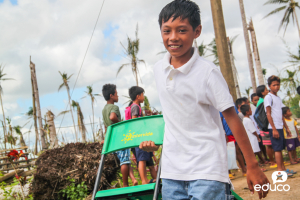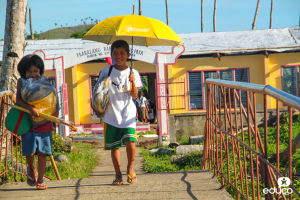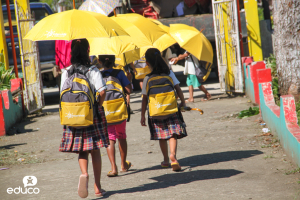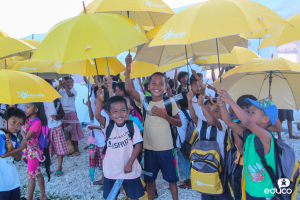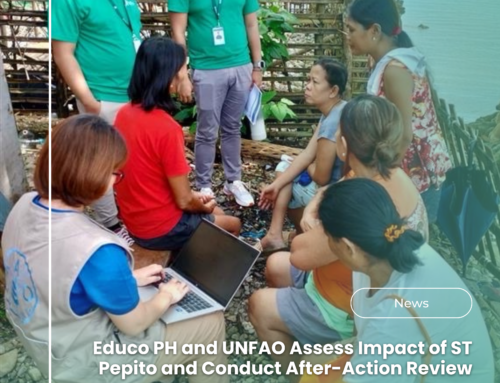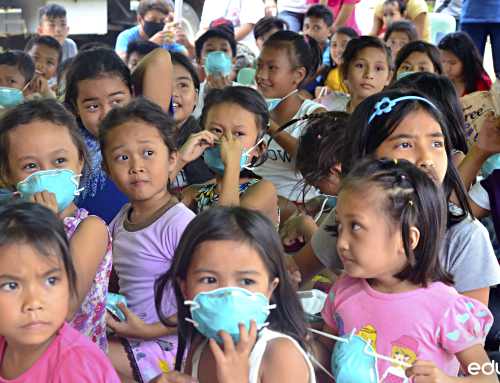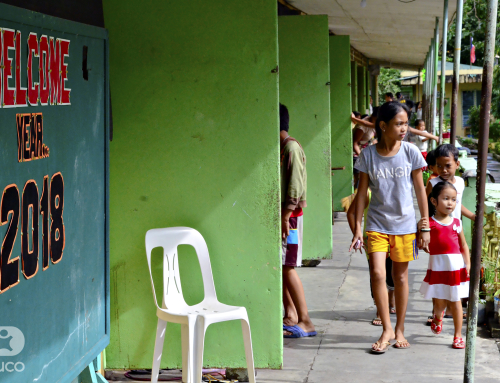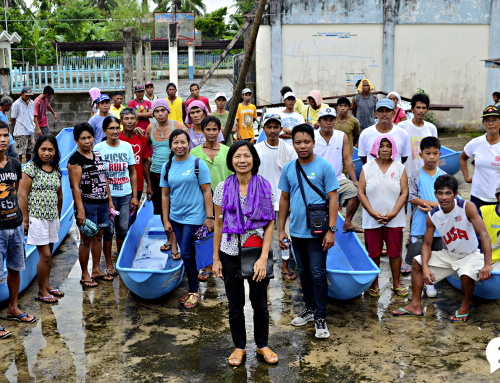Without a doubt, children belong to the most vulnerable population affected by any kind of disaster. Aside from access to clean water, food, clothing and shelter, schooling is usually interrupted due to damages in school materials and infrastructures. Repair of these facilities are usually least prioritized during emergencies. Where school buildings are not destroyed, these spaces are usually used as evacuation centers.
When Typhoon Haiyan hit the central Philippines in 2013, the massive devastation in both properties and lives had gravely affected the school system. Educo Philippines was there to actively help in rebuilding the lives of thousands of children and their families.
Educo Philippines provided instructional materials and school furniture in different temporary learning spaces, as well as back-to-school kits to 22 schools spread across Quinapondan and Guiporlos in Eastern Samar. These materials included Programmed Teaching Materials in English and Mathematics for Grades 1 to 3, school armchairs and table, and mobile chalkboards and instructional materials for Kindergarten classes. The school kits were based on Inter-Agency Network for Education and Emergencies (INEE) Minimum Standards and Department of Education’s standards. These helped normalize the local situation and helped immediate resumption of classes.
“We do not want to leave the children behind amidst the relief efforts that is why the organization prioritized initiatives that will put them back to school and lead them back to their normal lives,” Country Director Imelda Abalos recollects.
This emergency response in education was a result of close coordination with UNOCHA Education Cluster, UNICEF and other INGOs operating in the area such as Plan International and Save the Children. This was in addition to the consultations conducted with the local government units during the earlier relief operations covering 57 barangays spread across five municipalities (Balangiga, Quinapondan, Girporlos, Salcedo and Lawaan) in Eastern Samar. This relief operation reached some 10,000 families as a result of close coordination with national government agencies, including DSWD-R05.
Aside from these initiatives, Educo Philippines in the past has started working on environmental protection like coastal and upland resource management. Disaster Risk Reduction and Management (DRRM) activities included conduct of hazard, vulnerability and capacity assessments (HVCA), distribution of DRR equipment and conduct of drills on fire and water safety and rescue.
Today, Educo Philippines through its Organic Agriculture-based Social Enterprise (OABSE) is promoting climate smart agriculture among 20 farmer organizations in the municipalities of Polangui, Libon, Bato, Donsol and Castilla in the Bicol Region.
Moreover, the OABSE initiative has also linked the farmer organizations to the committees on organic agriculture and DRRM councils at the barangay levels to allocate funds in their annual investment plans. These organizations have also been linked with the Department of Agriculture Regional Office for technical and funding assistance.
“Although sounds cliché, it takes a village to raise a child, that is why we appreciate the collaborative efforts of our partners, stakeholders and dedicated staff in ensuring that children’s well-being is at the center of our efforts,” she further shares.
Truly Typhoon Haiyan has set the “new normal” in the Philippines and spawned efforts towards making communities and families become more resilient. Within the framework of ensuring protection and safety of children at all times, Educo Philippines is now working on capitalizing its gains in education and child-friendly local governance as it moves forward to DRR and protection of children in both emergency and normal situations.
# Story by Mariella, MEL Specialist

